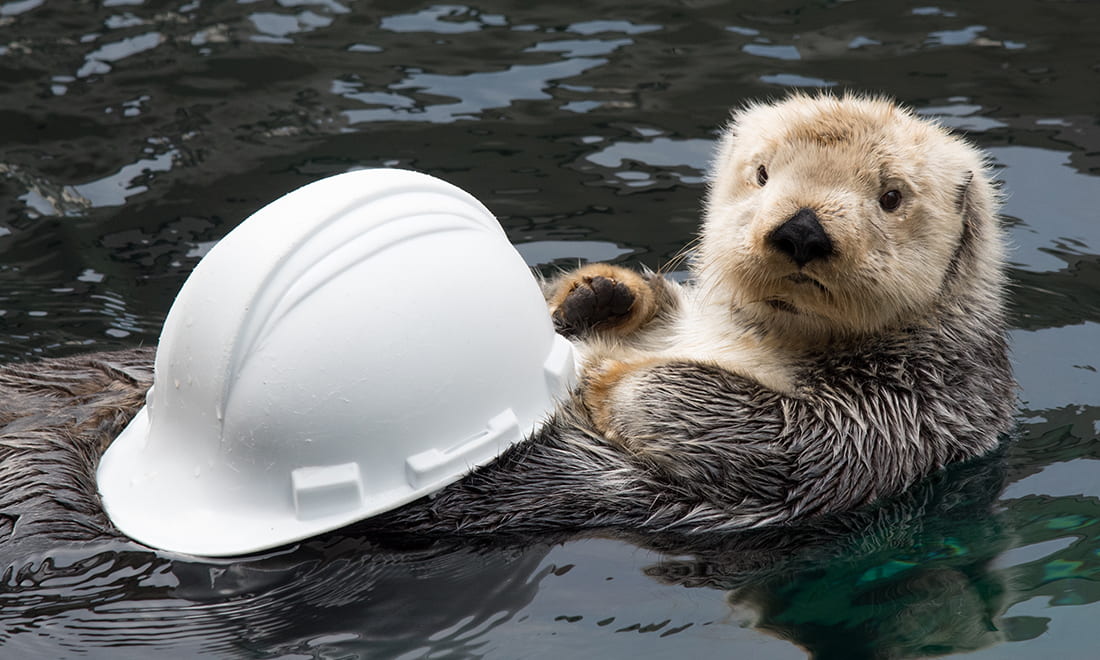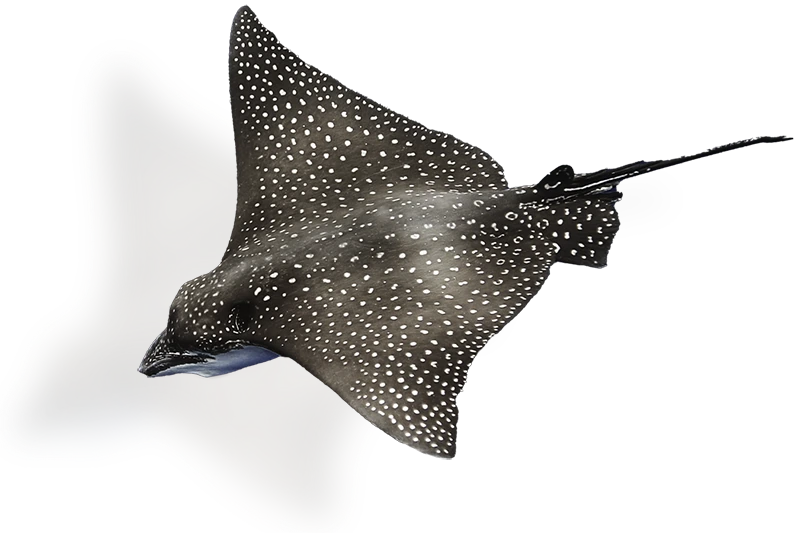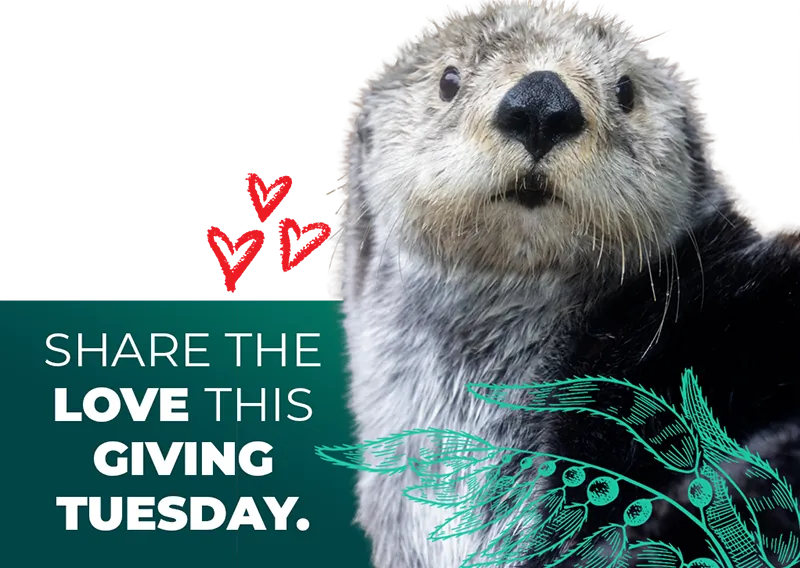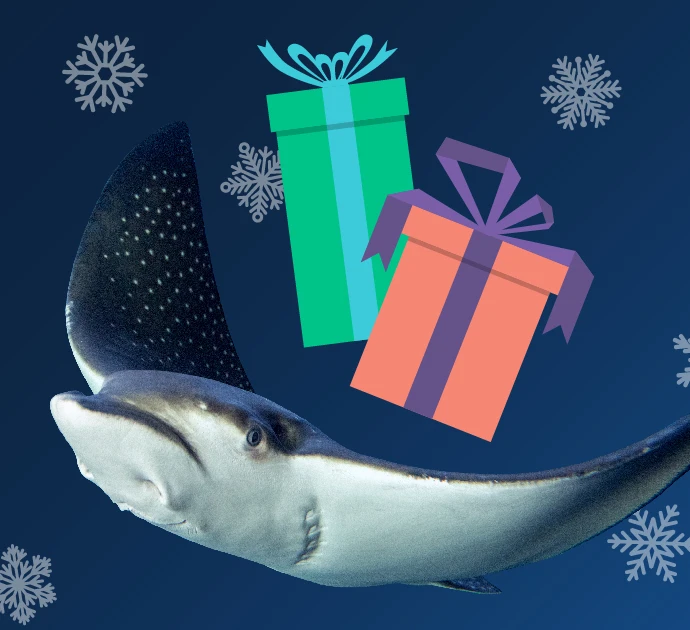We are deeply saddened to announce the loss of Aniak, one of our beloved sea otters. Aniak was a 19-year-old female born here at the Seattle Aquarium to Lootas, our former sea otter matriarch. Aniak became a mother during her time at the Aquarium, giving birth to a male named Chugach in 2005, who moved to Pittsburgh Zoo & PPG Aquarium, and a female named Sekiu in 2012, who now lives at Point Defiance Zoo & Aquarium.
At 19, Aniak was an elderly sea otter. She had been dealing with chronic skin issues for six years, and while she continued to do all the normal sea otter things, it had been a delicate balance to maintain her comfort while also minimizing side effects from the medications needed to reduce her symptoms. Working with other sea otter veterinarians and dermatologists, we continued to adapt her care in the face of this chronic issue. In spite of the care provided, her health swiftly declined this week and the decision was made to humanely euthanize her early this morning.
This brings up the good question of how we know it’s time to provide humane euthanasia. “If an animal is in pain or distress that cannot be relieved, that decision is obvious and it is a great privilege as a veterinarian to be able to relieve suffering and provide an animal with a peaceful passing,” comments Senior Veterinarian Dr. Caitlin Hadfield. “However, just as with your dog or cat, that decision is harder with chronic relaxing-remitting health issues,” she continues. We want to give all the animals at the Aquarium the opportunity to live their best lives. To help with that, every animal at the Aquarium has regular welfare assessments to identify any opportunities to improve their well-being.
When an animal has a serious health condition or is past their expected life span, we use very frequent assessments that are tailored to that animal’s needs. For example, for a tufted puffin with arthritis, we may evaluate how well they are moving around on land and how much they explore their environment. We use these and other metrics as a base to talk about their quality of life, prognosis and the options available to us. For Aniak, we reached a point this morning where the best decision for her was humane euthanasia.
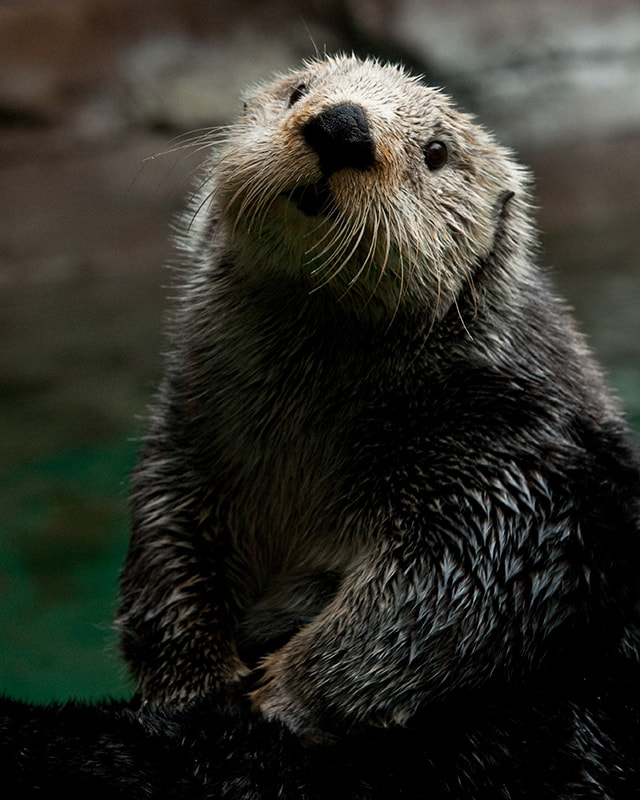
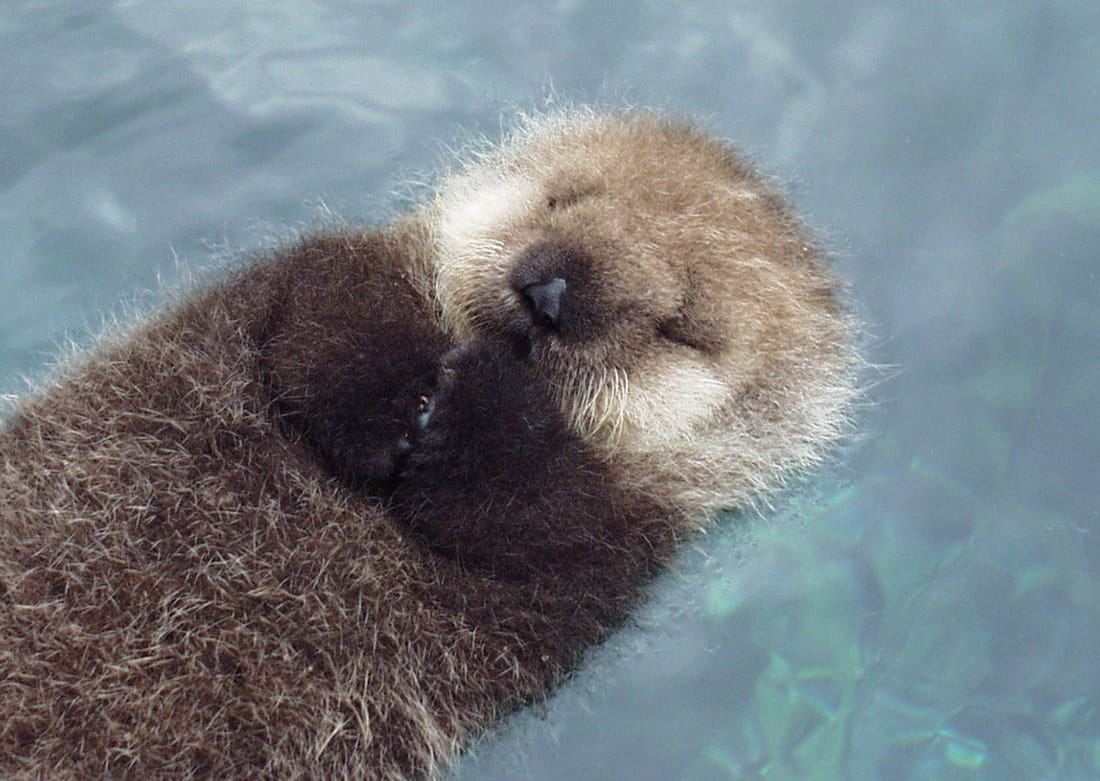
Aniak was a wonderful ambassador for her species. In addition to being absolutely adorable, sea otters are a vital part of our ecosystem in the Pacific Northwest. They feast on sea urchins, which prevents that population from eating all the kelp, which in turn offers habitat and protection to many species in our waters. Since sea otters need to eat around 25% of their body weight every day, that adds up to a lot of sea urchins, shellfish, squid, fish, crabs and shrimp.
There are around 2,800 sea otters living off the Washington coast; this is thanks to population recovery efforts after they were hunted nearly to extinction at the turn of the 19th century for their amazingly thick fur—anywhere from 500,000 to 1 million hairs per square inch, the densest fur on Earth! All that hair keeps sea otters from needing a layer of blubber to keep warm, but they do have to regularly groom their fur and blow air into it to maintain its incredible insulating qualities.
The Bird and Mammal team’s expert and diligent attention, along with the amazing veterinary care provided by Dr. Hadfield, allowed us to give Aniak the best life possible. She inspired not only our staff and volunteers but also countless people who visited her in person or watched her on our webcams. She was gentle, yet spirited, and a devoted mother, and will be dearly missed by our staff, volunteers and visitors.
We invite you to learn more about sea otters by visiting their fact sheet on our website and seeing them in person during your next visit to the Aquarium. You can also watch our sea otters in real time in their habitat via our live webcams.
